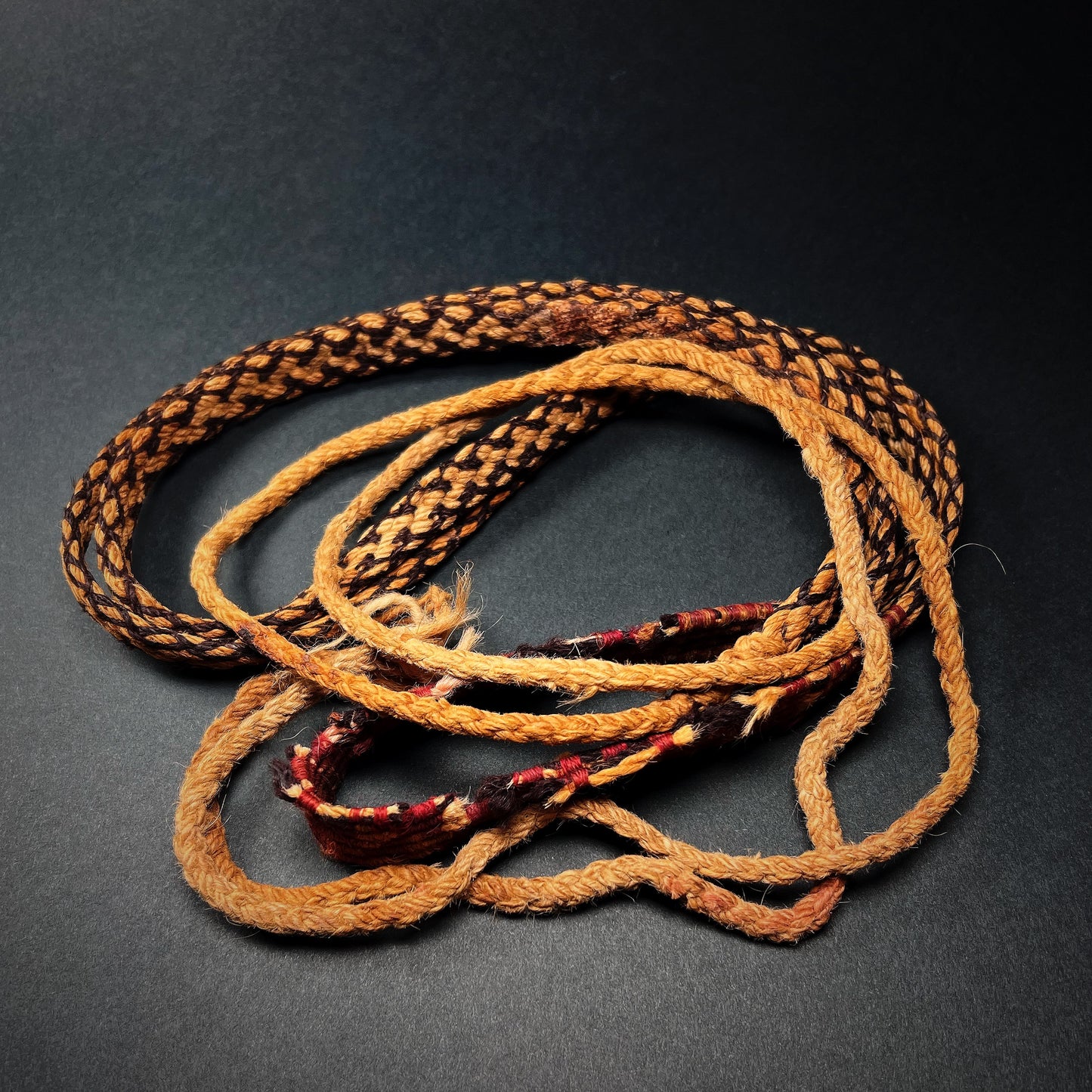Chancay Woven Textile Sling
Chancay Woven Textile Sling
Couldn't load pickup availability
Pre-Columbian Era, Chancay Culture, c. 1000-1470 AD, Peru
A remarkable and well-preserved Chancay woven sling, meticulously crafted from cabuya fiber with vibrant camelid fiber accents. The long, banded fiber cord is expertly woven in rich black, dark brown, and beige hues, showcasing the Chancay mastery of textile artistry. At its center, a reinforced cradle-like support holds a stone, allowing the user to launch projectiles with tremendous force. By spinning the sling overhead and swiftly releasing it, this weapon could propel stones with bone-breaking velocity, serving as a powerful tool for both hunting and warfare.
The Chancay civilization, thriving along Peru’s central coast between 1000-1470 AD, is renowned for its extraordinary textile craftsmanship. Textiles were not merely functional but held deep symbolic meaning, representing status, spirituality, and ritual significance. Chancay artisans excelled in creating delicate gauze weavings, often incorporating geometric motifs, animals such as monkeys, birds, and fish, as well as human figures. Their work featured a rich palette of yellows, browns, scarlet, white, blues, and greens, woven from llama wool, cotton, and even adorned with feathers.
Beyond daily use, textiles played a vital role in funerary practices. The Chancay people wrapped their deceased in layers of cloth, often covering the head with finely woven headdresses, ensuring a protected passage into the afterlife.
This rare and exceptional Chancay sling is not only an impressive artifact of Pre-Columbian ingenuity but also a testament to the artistic sophistication of an ancient civilization—a true collector’s piece of historical significance.
Good condition. Age-related wear, loose threads and fraying. Rich earthen deposits. The ends lack the finger loop. Size approx. 138,0cm x 2,5cm x 0,5cm.
Provenance: Former collection of the archaeologist Ferdinand Anton, Germany, combined between 1950 and 1965. Ferdinand Anton was born in 1929 in Munich, Germany. He made a living by writing richly illustrated books about the art objects and religious rituals of Pre-Columbian cultures: the Aztecs, the Maya, and Andean peoples of South America. He was an explorer who flew to South America and Mexico, and hiked to remote shrines where few Westerners had set foot. He wrote more than forty books.
For a similar examples see:
Sling, The Metropolitan Museum of Art, New York, Accession Number: 1994.35.103 (https://www.metmuseum.org/art/collection/search/316928)
Sling, Princeton University Art Museum, Accession number: 1995-376 (https://artmuseum.princeton.edu/collections/objects/4624)


-
Shipping
The shipment will be prepared in the course of 3-5 days and dispatched via Posti Group Oyj or purchased item(s) can be picked up from our shop during the store's opening hours (Tarkk’ampujankatu 4, 00140, Helsinki, Finland). Within the Finland, all items are shipped via Posti Group Oyj unless otherwise requested. We pack the items carefully and mainly in recycled materials because we want to save nature. You will receive the tracking number for your items by e-mail.
-
Returns
Returns and exchange will be accepted within fourteen days (14) of receipt at the purchaser’s cost to include freight and packaging. Items must be returned in the same condition as when they were shipped, and will not be accepted if damaged or altered in any way. Please inform us via email (info@gotanmaailma.fi) or by calling +358408408352 before sending. We do not accept returns more than 14 days after delivery.


